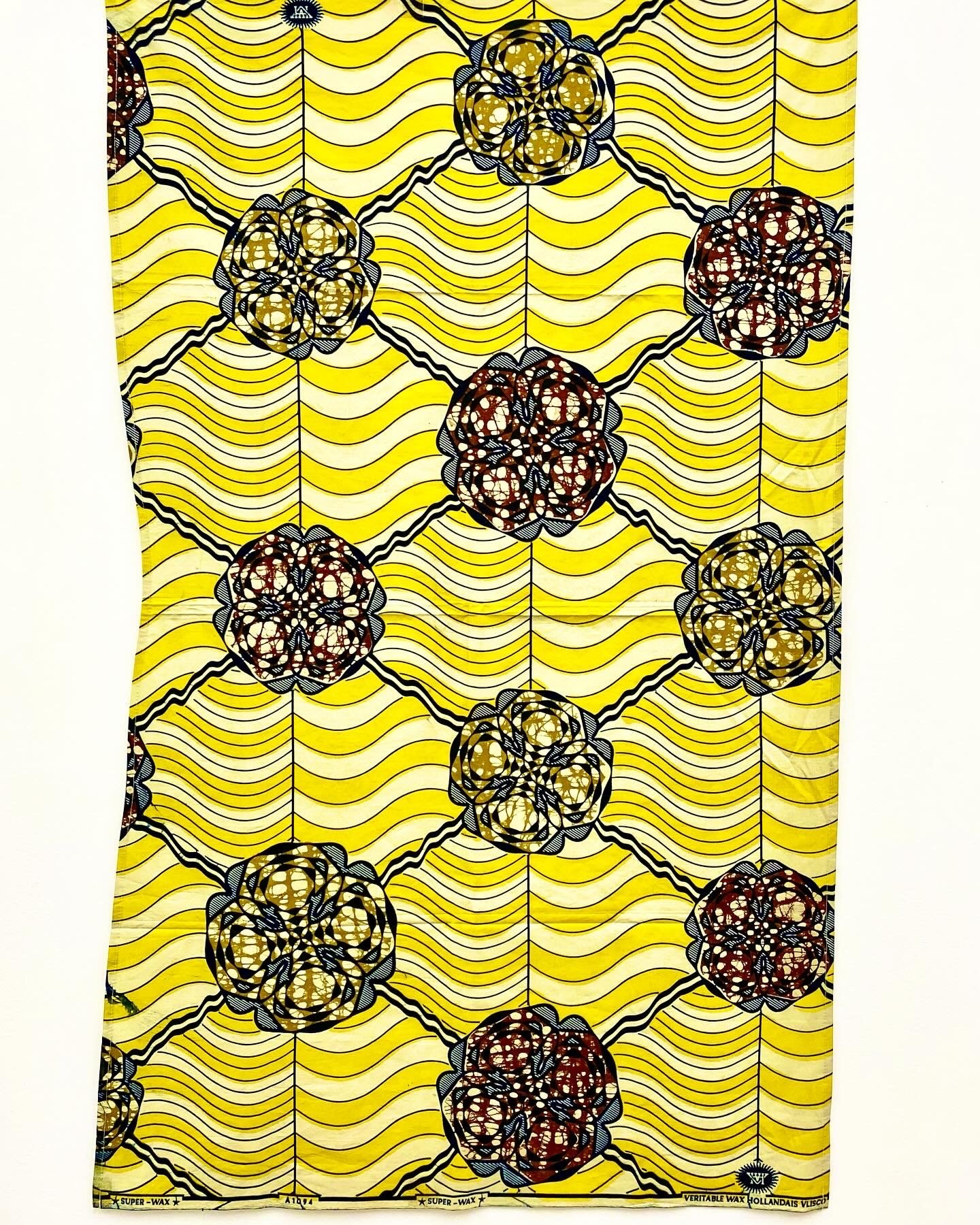 Image 1 of 5
Image 1 of 5

 Image 2 of 5
Image 2 of 5

 Image 3 of 5
Image 3 of 5

 Image 4 of 5
Image 4 of 5

 Image 5 of 5
Image 5 of 5






Dutch Wax Cloth
“Dutch wax” cloth, with its eye-popping colors, is the foundation of West African fashion, from Angola to Senegal. The story of how this happened is as complex as the fantastical patterns of the cloth itself. First, it should be noted that West Africa has a long and deep tradition of indigenous cloth production, including cloth with complex mechanical and chemical resist patterns.
As it turns out, another culture on the far side of the world also had a sophisticated resist-dying tradition: the batik dying of Indonesia. Batik involves applying complex patterns in wax resist to cloth, then dying the untreated portions. This process may be repeated multiple times, resulting in fantastic, complex patterns. When this was first observed by emissaries from the colonial powers (notably Sir Thomas Stamford Raffles of Britain), they immediately imagined ways to mechanize and profit from the technique. It was the Dutch, however, who successfully capitalized on batik (dominated by Vlisco, which has been making Dutch wax cloth since 1846). The plan was to sell mass-produced "batik" back to the Indonesians. After that failed, the Dutch discovered that West Africa already had a taste for lavishly-patterned fabrics. Commercial inroads were made, and the rest is history.
In many parts of West- and central Africa, local groups have adopted certain commercial patterns of Dutch wax cloth, and given them their own cultural significance. One might signify connection to a matrilineal clan, for example, while another might warn against extramarital dalliances. The subtleties are endless. West African style has also bounced back to Europe and America, showing up in fashion lines from houses such as Givenchy and Marc Jacobs. Artists with roots in the African diaspora, including Rhianna, and Beyonce (see image) are also known to rock Dutch wax as a way of connecting with their cultural roots — imported or not.
18” x 47”
“Dutch wax” cloth, with its eye-popping colors, is the foundation of West African fashion, from Angola to Senegal. The story of how this happened is as complex as the fantastical patterns of the cloth itself. First, it should be noted that West Africa has a long and deep tradition of indigenous cloth production, including cloth with complex mechanical and chemical resist patterns.
As it turns out, another culture on the far side of the world also had a sophisticated resist-dying tradition: the batik dying of Indonesia. Batik involves applying complex patterns in wax resist to cloth, then dying the untreated portions. This process may be repeated multiple times, resulting in fantastic, complex patterns. When this was first observed by emissaries from the colonial powers (notably Sir Thomas Stamford Raffles of Britain), they immediately imagined ways to mechanize and profit from the technique. It was the Dutch, however, who successfully capitalized on batik (dominated by Vlisco, which has been making Dutch wax cloth since 1846). The plan was to sell mass-produced "batik" back to the Indonesians. After that failed, the Dutch discovered that West Africa already had a taste for lavishly-patterned fabrics. Commercial inroads were made, and the rest is history.
In many parts of West- and central Africa, local groups have adopted certain commercial patterns of Dutch wax cloth, and given them their own cultural significance. One might signify connection to a matrilineal clan, for example, while another might warn against extramarital dalliances. The subtleties are endless. West African style has also bounced back to Europe and America, showing up in fashion lines from houses such as Givenchy and Marc Jacobs. Artists with roots in the African diaspora, including Rhianna, and Beyonce (see image) are also known to rock Dutch wax as a way of connecting with their cultural roots — imported or not.
18” x 47”
“Dutch wax” cloth, with its eye-popping colors, is the foundation of West African fashion, from Angola to Senegal. The story of how this happened is as complex as the fantastical patterns of the cloth itself. First, it should be noted that West Africa has a long and deep tradition of indigenous cloth production, including cloth with complex mechanical and chemical resist patterns.
As it turns out, another culture on the far side of the world also had a sophisticated resist-dying tradition: the batik dying of Indonesia. Batik involves applying complex patterns in wax resist to cloth, then dying the untreated portions. This process may be repeated multiple times, resulting in fantastic, complex patterns. When this was first observed by emissaries from the colonial powers (notably Sir Thomas Stamford Raffles of Britain), they immediately imagined ways to mechanize and profit from the technique. It was the Dutch, however, who successfully capitalized on batik (dominated by Vlisco, which has been making Dutch wax cloth since 1846). The plan was to sell mass-produced "batik" back to the Indonesians. After that failed, the Dutch discovered that West Africa already had a taste for lavishly-patterned fabrics. Commercial inroads were made, and the rest is history.
In many parts of West- and central Africa, local groups have adopted certain commercial patterns of Dutch wax cloth, and given them their own cultural significance. One might signify connection to a matrilineal clan, for example, while another might warn against extramarital dalliances. The subtleties are endless. West African style has also bounced back to Europe and America, showing up in fashion lines from houses such as Givenchy and Marc Jacobs. Artists with roots in the African diaspora, including Rhianna, and Beyonce (see image) are also known to rock Dutch wax as a way of connecting with their cultural roots — imported or not.
18” x 47”